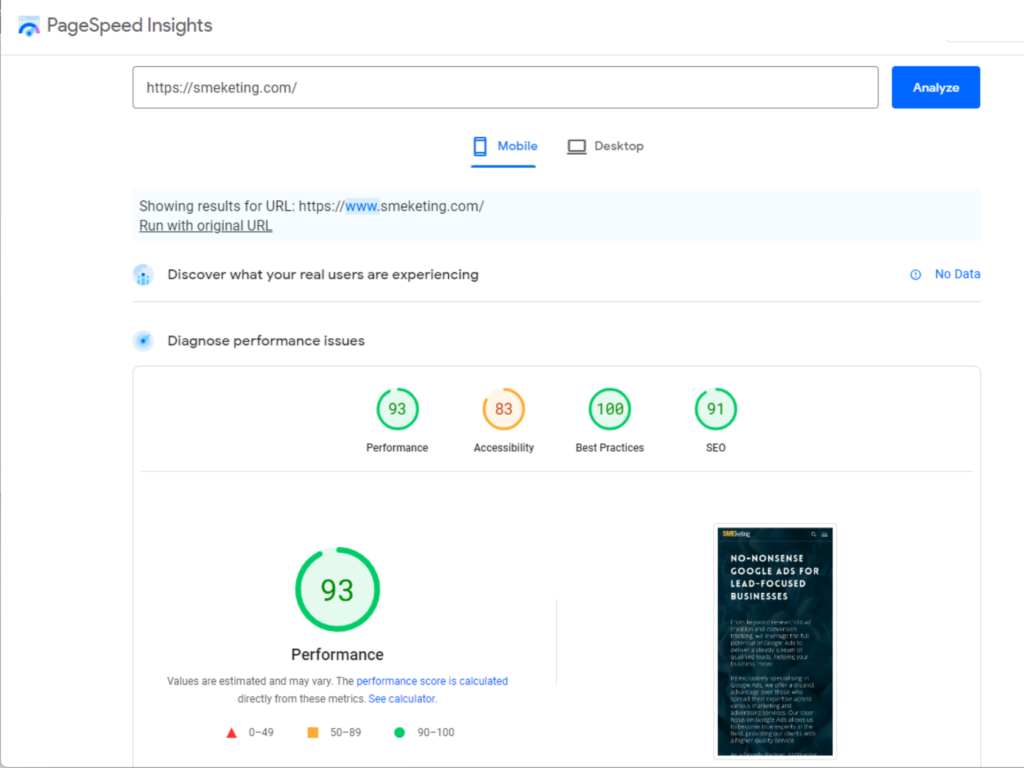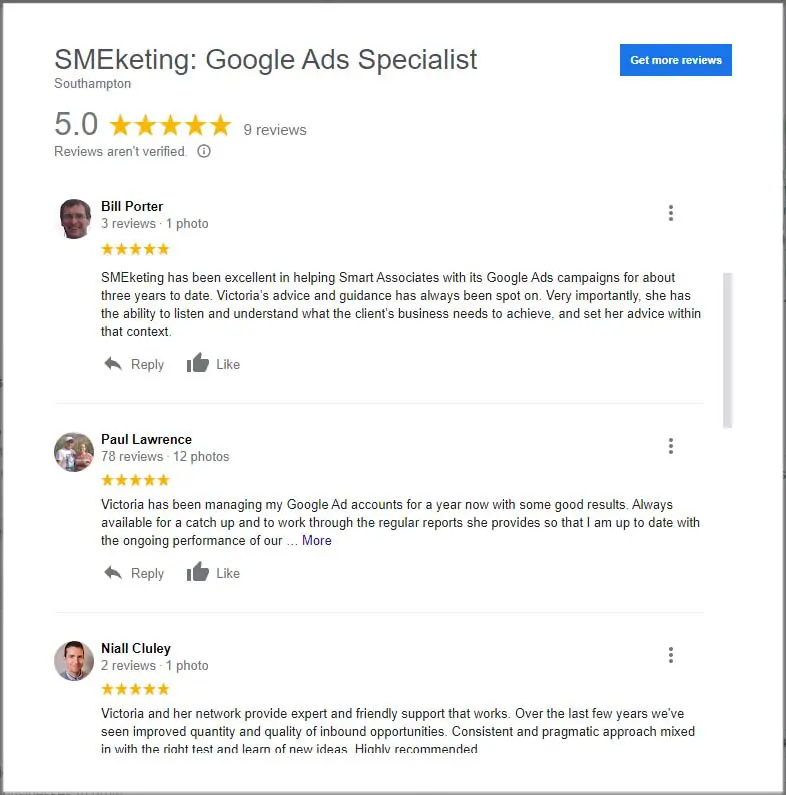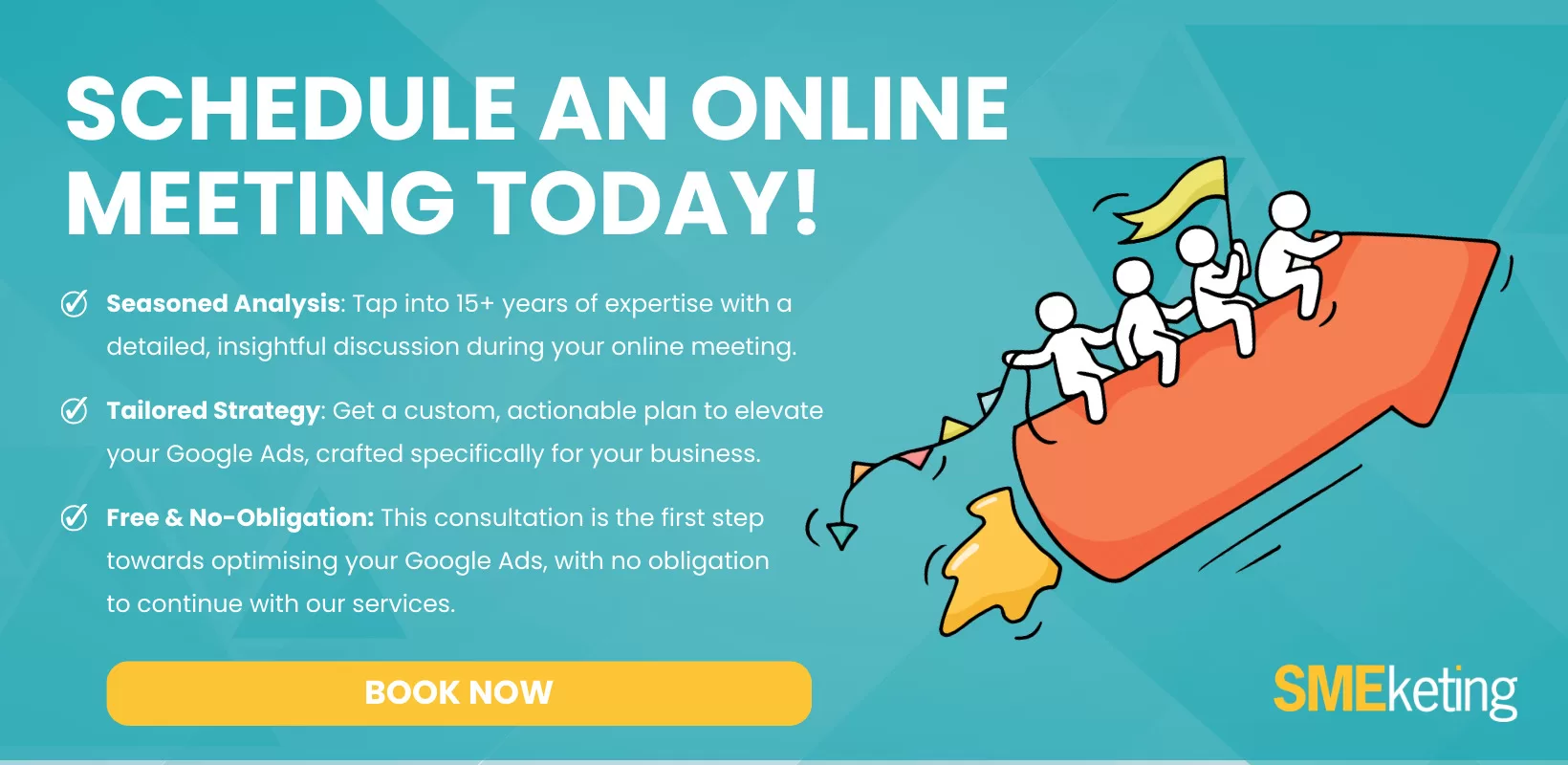Knowing how to optimise your conversion rates is crucial for any business aiming to succeed online. A high conversion rate translates into more sales, leads, and engagement from your audience. It’s not merely about driving traffic to your site; it’s about making that traffic work for you. Let’s explore some advanced strategies to elevate your conversion rates and turn casual browsers into committed buyers.
1. Prioritise Page Load Speed for Instant Satisfaction
The speed at which your webpage loads is absolutely critical if you want to optimise your conversion rates. A delay of even a few seconds can lead to a notable decrease in conversion rates. Websites that load quickly hold users’ attention and significantly reduce bounce rates.
Utilising tools like Google’s PageSpeed Insights is crucial for a thorough examination of your website’s performance. This tool provides a wealth of information and a list of actionable recommendations to improve your site’s loading time.

Example of a Google PageSpeed Insights Report
Acting on these suggestions isn’t just a one-time fix; it’s a continual commitment to providing an excellent user experience.
Fast load times contribute to a positive first impression, keeping potential customers engaged and more likely to complete a lead generation form or make a purchase.
Keep in mind that every second counts, and optimising for speed is an ongoing process that can have a substantial impact on your site’s success.
2. Craft Your Design with Precision and Purpose
The design of your website should be a beacon of clarity and purpose. Position your content thoughtfully to steer users smoothly towards your call to action (CTA).
This should not be a labyrinthine journey; rather, it should be a straightforward path that leads them right to where you want them to go.
- Clear, Engaging Copy: Write succinct, persuasive text that clearly communicates your value proposition to visitors.
- Quality Visuals: Support your message with high-quality images and graphics that enhance understanding and engagement.
- Intuitive Navigation: Ensure users can easily find what they’re looking for with a straightforward and logical site structure.
- Sensible Layout: Adopt a layout that organically guides users through the information and towards your call to action.
- Professionalism and Attention to Detail: Reflect your brand’s credibility and care for customer experience through the polished look and feel of your website.
- Customer-Friendly Ethos: Demonstrate your commitment to customer satisfaction with a user-friendly website that anticipates and meets user needs.
3. Leverage Social Proof to Fortify Trust
Trust is fundamental to any transaction or interaction online and vital if you want to optimise your conversion rates. Social proof like testimonials, user reviews, case studies, and third-party endorsements act as trust signals for your brand. At SMEketing we’re proud of the testimonials we receive and like to ensure we showcase these as often as possible.
Showcasing genuine positive feedback not only reassures prospective customers but also influences their decision-making, amplifying the perceived reliability and value of your offerings.

Examples of some client reviews
4. Streamline the Conversion Process
When considering the design of your website, prioritising the ease of the user’s journey towards the conversion point is critical. An intricate or unclear path to conversion can significantly deter potential leads.
Here are some steps to ensure your website’s conversion path is optimised:
- Streamline the Conversion Path: Your website should guide visitors smoothly towards the conversion action, be it making a purchase, signing up, or filling out a contact form.
- Transparency Post-Conversion: Post-conversion processes should be transparent. Whether it’s a simple thank you message, a confirmation email, or a follow-up call, let your customers know what to expect next.
- Set Accurate Expectations: Accurately depict what your service or product entails to avoid customer confusion or distrust. Clear expectations are fundamental to customer satisfaction and retention.
- Enhance Trust: A straightforward conversion path not only simplifies the user experience but also demonstrates your brand’s commitment to transparency and reliability.
- Simplify User Experience: A convoluted journey is a barrier. Eliminating unnecessary steps can increase the likelihood of conversion by reducing friction and enhancing user satisfaction.
By implementing these points, you align your website more closely with user expectations and behaviour, providing a seamless path to conversion that can help in optimising your conversion rates.
5. Optimise Forms for User-Friendliness
Forms are often the final hurdle in the conversion process, and a complex or lengthy form can deter even the most interested users. Optimise your forms for ease of use—ask only for essential information, utilise auto-fill where possible, and provide clear instructions.
Remember, every field you add can decrease the likelihood of form completion. However… for every field you add, you increase the lead quality. So this is likely something you’ll want to test.
6. Test and Refine with A/B Split Testing
Assumptions can be your enemy when you are trying to optimise your conversion rates. Utilise A/B split testing to make informed decisions based on actual user behaviour rather than conjecture.
Test variations of your web pages, CTAs, and other conversion-related elements to discover what resonates best with your audience. This data-driven approach can unveil insights that significantly improve conversion rates.
7. Employ Dynamic Content for Personalisation
In an era where consumers are bombarded with generic advertising, personalisation is a fantastic way to boost your relevance and connection with the visitor.
By incorporating personalised elements into your website, you can create a unique and memorable user experience that not only resonates with your visitors but also drives them towards making a conversion.
- Dynamic Content: Implement features that display content adjustments in real-time, aligning with the interests or past behaviour of the visitor.
- Personalised Greetings: Use smart technology to greet return visitors by name, making the experience feel exclusive and welcoming.
- Tailored Recommendations: Offer product suggestions or content that matches the user’s past interactions, preferences, or geographic location.
- Engagement Boosters: Increase engagement by ensuring that each user feels seen and valued through a customised experience on your website.
- Relevance and Connection: Show users content that matters to them, reducing bounce rates and fostering a connection that paves the way to conversion.
By adopting these strategies, you can transform absolutely optimise your conversion rates for the better. It’s not just about incremental gains; it’s about making significant, data-driven enhancements that resonate with your audience and align with your brand’s objectives.
With a commitment to continuous testing, refinement, and adaptation, you can ensure that your website not only attracts visitors but converts them into valuable customers or leads.
- How to Do Keyword Research for Google Ads - January 15, 2024
- A Comprehensive Guide to Google Ads for B2C Businesses - January 8, 2024
- How to Write Calls to Action (CTAs) for Google Ads - December 25, 2023







